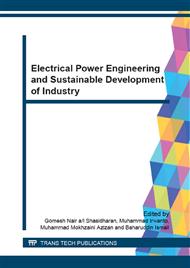p.368
p.373
p.378
p.383
p.388
p.393
p.398
p.403
p.407
Overview of Vertical Axis Wind Turbine (VAWT) is one of the Wind Energy Application
Abstract:
This paper reviews the available types of wind turbine which is one of the wind energy applications. The authors intend to give investors a better idea of which turbine is suitable for a particular setting and to provide a new outlook on vertical axis wind turbines. Wind technology has grown substantially since its original use as a method to grind grains and will only continue to grow. Vertical-axis wind turbines are more compact and suitable for residential and commercial areas while horizontal-axis wind turbines are more suitable for wind farms in rural areas or offshore. However, technological advances in vertical axis wind turbines that are able to generate more energy with a smaller footprint are now challenging the traditional use of horizontal wind turbines in wind farms. Vertical axis wind turbines do not need to be oriented to the wind direction and offer direct rotary output to a ground-level load, making them particularly suitable for water pumping, heating, purification and aeration, as well as stand-alone electricity generation. The use of high efficiency Darrieus turbines for such applications is virtually prohibited by their inherent inability to self-start.
Info:
Periodical:
Pages:
388-392
Citation:
Online since:
September 2015
Price:
Сopyright:
© 2015 Trans Tech Publications Ltd. All Rights Reserved
Share:
Citation:


